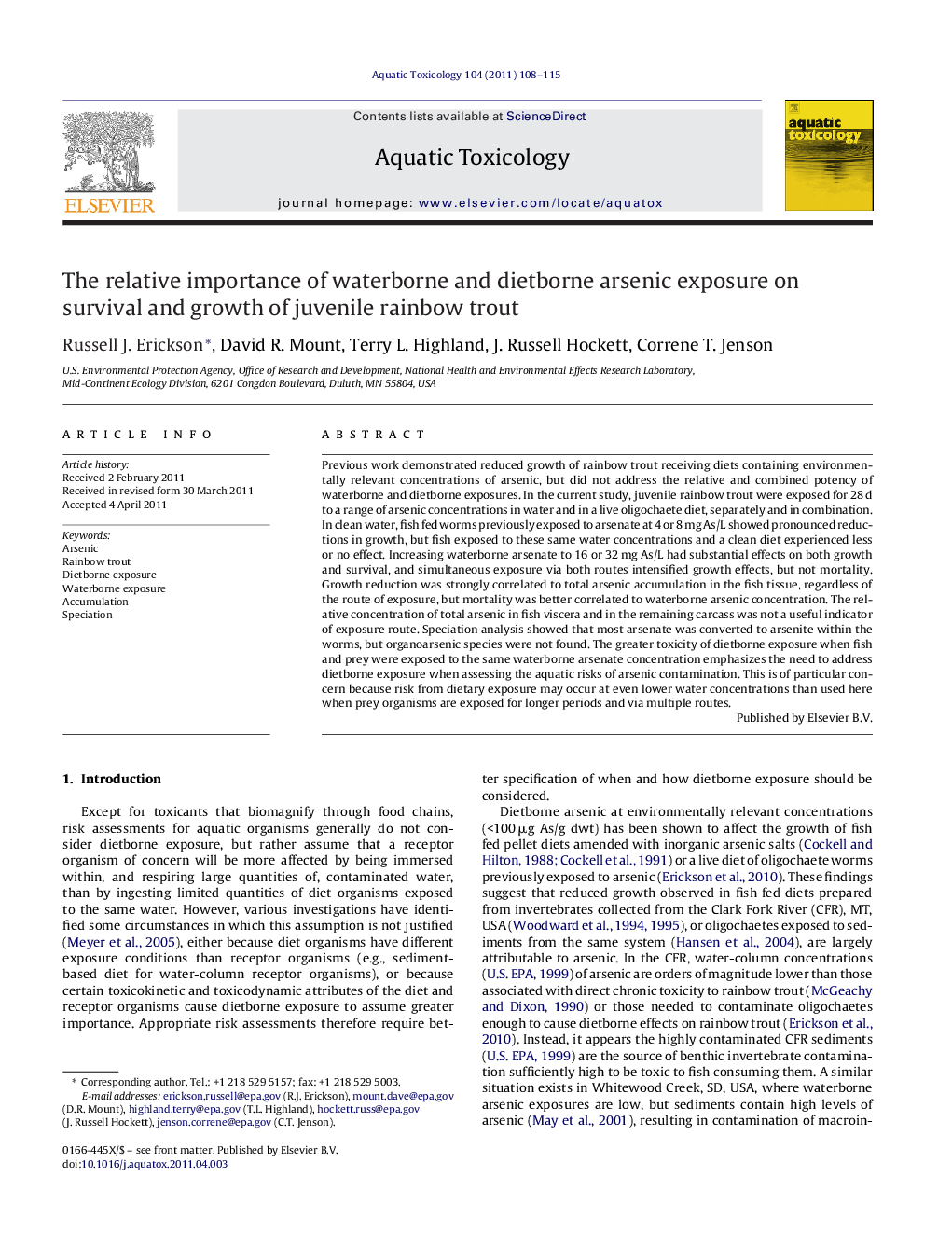| کد مقاله | کد نشریه | سال انتشار | مقاله انگلیسی | نسخه تمام متن |
|---|---|---|---|---|
| 4529895 | 1625986 | 2011 | 8 صفحه PDF | دانلود رایگان |

Previous work demonstrated reduced growth of rainbow trout receiving diets containing environmentally relevant concentrations of arsenic, but did not address the relative and combined potency of waterborne and dietborne exposures. In the current study, juvenile rainbow trout were exposed for 28 d to a range of arsenic concentrations in water and in a live oligochaete diet, separately and in combination. In clean water, fish fed worms previously exposed to arsenate at 4 or 8 mg As/L showed pronounced reductions in growth, but fish exposed to these same water concentrations and a clean diet experienced less or no effect. Increasing waterborne arsenate to 16 or 32 mg As/L had substantial effects on both growth and survival, and simultaneous exposure via both routes intensified growth effects, but not mortality. Growth reduction was strongly correlated to total arsenic accumulation in the fish tissue, regardless of the route of exposure, but mortality was better correlated to waterborne arsenic concentration. The relative concentration of total arsenic in fish viscera and in the remaining carcass was not a useful indicator of exposure route. Speciation analysis showed that most arsenate was converted to arsenite within the worms, but organoarsenic species were not found. The greater toxicity of dietborne exposure when fish and prey were exposed to the same waterborne arsenate concentration emphasizes the need to address dietborne exposure when assessing the aquatic risks of arsenic contamination. This is of particular concern because risk from dietary exposure may occur at even lower water concentrations than used here when prey organisms are exposed for longer periods and via multiple routes.
Journal: Aquatic Toxicology - Volume 104, Issues 1–2, July 2011, Pages 108–115